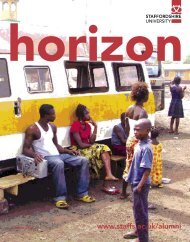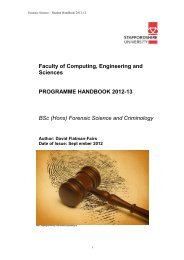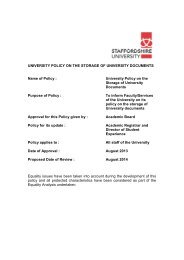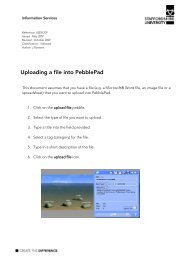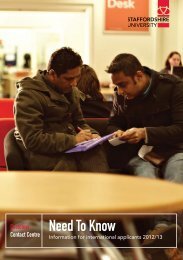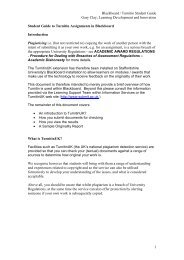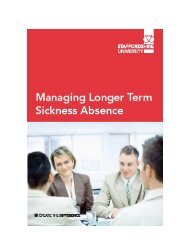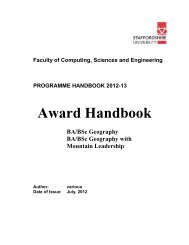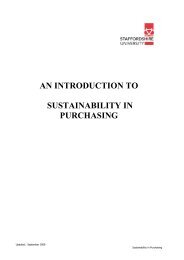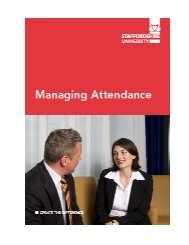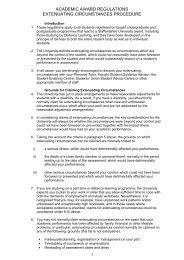Ambush marketing: FIFA's rights protection programme
Ambush marketing: FIFA's rights protection programme
Ambush marketing: FIFA's rights protection programme
Create successful ePaper yourself
Turn your PDF publications into a flip-book with our unique Google optimized e-Paper software.
ADVERTISING<br />
<strong>Ambush</strong> <strong>marketing</strong>: FIFA’s<br />
<strong>rights</strong> <strong>protection</strong> <strong>programme</strong><br />
The 2010 FIFA World Cup will be<br />
remembered in the Netherlands not<br />
only for the country’s excellent<br />
performance, but also for FIFA’s<br />
attempted prosecution of women<br />
wearing orange miniskirts bearing<br />
Bavaria Beer’s logo. Kris Lines and<br />
Jon Heshka, sports law Professors,<br />
examine the effectiveness of FIFA’s<br />
methods of protecting itself from<br />
ambush <strong>marketing</strong>, how FIFA’s<br />
<strong>rights</strong> <strong>protection</strong> is written into<br />
legislation and how this applied in<br />
South Africa.<br />
Amidst the buzzing of the<br />
Vuvuzela’s and the occasional<br />
officiating error, the 2010 FIFA 1<br />
World Cup South Africa(tm) will<br />
also be remembered for the<br />
expulsion of 36 orange mini-skirt<br />
wearing women from a match and<br />
the subsequent prosecution (and<br />
then dropping) of charges against<br />
the two alleged ‘ringleaders’ behind<br />
the incident. Whilst titillating, this<br />
is not just a story about beautiful<br />
women being used to market a<br />
product. The real story is about the<br />
lengths to which companies will go<br />
to exploit loop-holes in the existing<br />
law and what implications these<br />
campaigns have for tackling<br />
counter-insurgency actions at<br />
future events.<br />
The article will conclude by<br />
examining how FIFA and<br />
Anheuser-Busch (the official beer<br />
sponsor) were so comprehensively<br />
ambushed that Bavaria rocketed<br />
from unmeasurable before the<br />
ambush to the fifth most visited<br />
beer website in the UK 2 , while<br />
Nike’s unofficial ‘Write the Future’<br />
campaign was widely viewed as the<br />
most successful <strong>marketing</strong><br />
campaign of the World Cup 3 .<br />
<strong>Ambush</strong> <strong>marketing</strong><br />
The phrase ‘ambush <strong>marketing</strong>’<br />
was coined in the 1980s to describe<br />
02<br />
attempts to capitalise on the<br />
goodwill, brand and reputation of<br />
a mega-event either by creating a<br />
false and/or unauthorised<br />
association with the right’s holder,<br />
or by intruding upon an event to<br />
gain publicity for their own brand<br />
or product. Infamous examples of<br />
previously successful ambushes<br />
include Nike’s blitzkrieg plastering<br />
of the Atlanta 1996 Summer<br />
Olympic Games at the expense of<br />
Reebok and American Express’s<br />
clever 1992 tagline poking fun at<br />
how visitors to the Barcelona<br />
Olympics Games ‘do not need a<br />
VISA’.<br />
With the World Cup(tm)<br />
representing the confluence of<br />
business and the beautiful game 4 , it<br />
should come as no surprise that<br />
the 2010 event was a prime target<br />
for ambush <strong>marketing</strong>. This article<br />
does not challenge FIFA’s need to<br />
defend its commercial interests<br />
against ambush - after all, their<br />
official six top-tier partners 5 ,<br />
sponsors 6 and national supporters 7<br />
all invested considerably for<br />
‘guaranteed exclusive association’<br />
with the World Cup(tm) - but<br />
rather the article questions the<br />
effectiveness of the anti-ambushing<br />
methods employed by FIFA.<br />
FIFA’s <strong>rights</strong> <strong>protection</strong><br />
<strong>programme</strong> is primarily founded<br />
on an aggressive <strong>protection</strong> of their<br />
trademark and copy<strong>rights</strong> through<br />
national and international mark<br />
<strong>protection</strong>, the tort of passing off,<br />
contractual terms and anti-trust<br />
laws. However, while these tools<br />
have had some success preventing<br />
traditional trademark violation<br />
and counterfeiting 8 , increasingly<br />
they are having little effect against<br />
the sophisticated modern<br />
ambusher, who operates in the<br />
greyer (or perhaps that should be<br />
more orange!) areas of the law. To<br />
combat these loopholes, event<br />
organisers have used political and<br />
commercial clout to require host<br />
countries to promulgate even<br />
stricter laws to further protect the<br />
<strong>rights</strong> vested in the events (in the<br />
case of South Africa, this was<br />
through a tightening of the<br />
Merchandise Marks Act 1941) 9 .<br />
However, even despite the<br />
restrictive nature of this legislation,<br />
it is still possible for ambushes to<br />
occur. For example, although a<br />
rival company’s <strong>marketing</strong><br />
campaign might detract from and<br />
dilute a sponsor’s message, unless<br />
the campaign directly infringes a<br />
specified protected mark, a sponsor<br />
or event organiser has no legal<br />
right to block the offending<br />
advertising 10 . This can be illustrated<br />
in South Africa by FIFA’s failure to<br />
include the Vuvuzela within the<br />
terms listed as part of the<br />
Merchandise Marks Act, thereby<br />
presenting companies 11 with an<br />
unprotected iconic image to use in<br />
an advert.<br />
<strong>Ambush</strong> <strong>marketing</strong> by<br />
association (Nike)<br />
Nike’s ‘Write the Future’ campaign<br />
is an orthodox example of ambush<br />
<strong>marketing</strong> by associating a product<br />
indirectly with an event. However,<br />
while the aim was orthodox, the<br />
method of communication was<br />
anything but. Nike centred the<br />
campaign on a three minute video<br />
clip with slick production values,<br />
that explored the ‘what if’ concept<br />
during a fictional football<br />
tournament. The launch of the<br />
video was premiered on Youtube,<br />
Facebook and during the final of<br />
the UEFA Champions League to<br />
widespread critical and public<br />
acclaim 12 . Indeed, at the time of<br />
writing, the official Youtube video<br />
had received a staggering 19.5<br />
million hits!<br />
This campaign was further<br />
extended by Nike during the<br />
tournament through ‘Write the<br />
Headline’ 13 , a 44 metre high colour<br />
LED display projected onto the<br />
side of Johannesburg’s Southern<br />
Life Centre. Fans could also<br />
world sports law report august 2010



